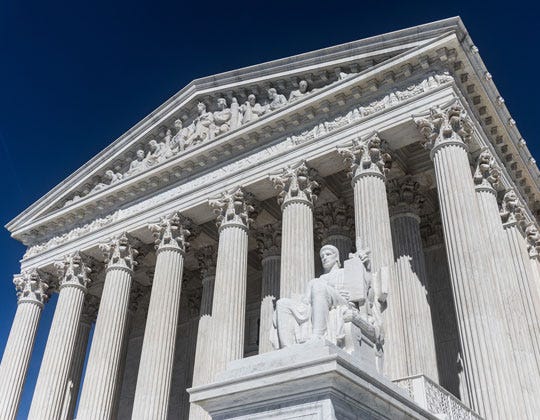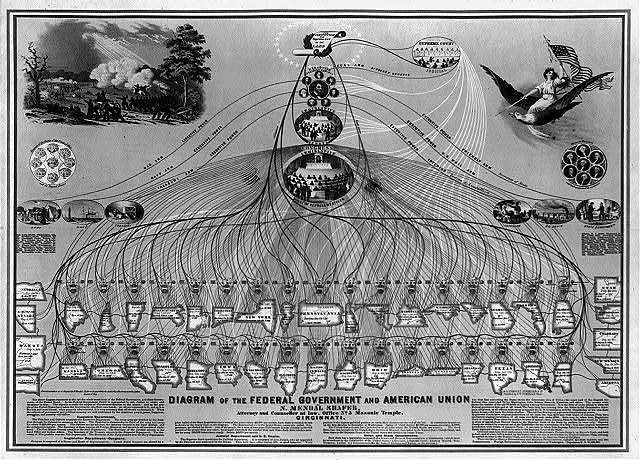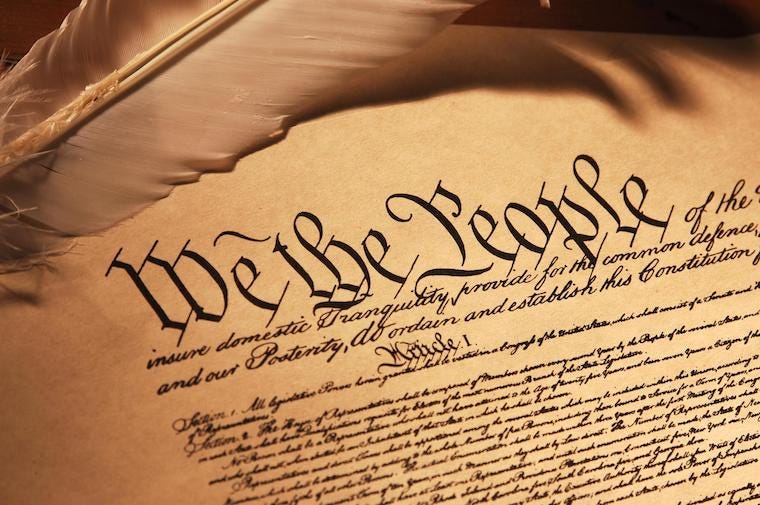The 7 basic principles of the US Constitution define how the American government operates and interacts with its citizens. The Constitution for the United States is a remarkably concise yet enduring document that serves as the supreme law of the land. James Madison wrote the US Constitution along with John Jay and Alexander Hamilton as the significant contributors. Establishing a strong but constrained government, striking a balance between authority and individual liberty, and preventing any one body from acquiring an excessive amount of power were the fundamental goals underlying their creation. Learn why understanding the distinctive characteristics of American democracy requires an understanding of these seven principles.
Check Out:What is the United States Bill of Rights?
| Principle | Location in the Constitution |
| Limited Government | Articles I, II, III |
| Republicanism | Preamble and Article I |
| Checks and Balances | Articles I, II, III |
| Federalism | 10th Amendment |
| Separation of Powers | Articles I, II, III |
| Popular Sovereignty | Amendment IX and Preamble |
| Individual Rights | Preamble and Bill of Rights |
1. Popular Sovereignty
-1750931456418.jpg)
At the heart of the U.S. Constitution is the principle of popular sovereignty, which means "rule by the people." This principle asserts that all political power ultimately resides with the citizens. The Preamble to the Constitution boldly declares this: "We the People of the United States...do ordain and establish this Constitution." It was a radical notion in the 18th century, contrasting sharply with monarchical rule.
2. Limited Government
-1750931591712.jpg)
The concept of limited government acts as a direct counterpoint to unlimited power in the Constitution for the United States. It dictates that the government is not all-powerful; it can only do what the people have explicitly given it the power to do. This principle, also known as the "rule of law," ensures that government officials, from the President down, are always subject to and never above the law. The America’s Constitution outlines specific powers granted to the federal government, and the Bill of Rights further limits its authority by protecting individual freedoms.
3. Separation of Powers
-1750931699713.jpg)
To prevent the concentration of power in any single hand, the Constitution for the United States establishes a separation of powers, dividing the national government into three distinct and independent branches:
-
Legislative Branch (Congress): Responsible for making laws.
-
Executive Branch (President): Responsible for enforcing laws.
-
Judicial Branch (Supreme Court and lower federal courts): Responsible for interpreting laws and the Constitution. This division ensures that each branch has its specific duties and authority, promoting efficiency and accountability.
4. Checks and Balances
-1750931929785.jpg)
Complementing the separation of powers is the system of checks and balances. This intricate system allows each branch to monitor, limit, and influence the actions of the other two. The goal is to prevent any single branch from becoming too powerful and to encourage cooperation. For example, the President can veto legislation passed by Congress, which is an executive check on the legislative branch, but Congress can override that veto with a two-thirds majority vote, which is a legislative check on the executive. The Supreme Court can declare laws unconstitutional, stating a judicial check on both the legislative and executive branches.
5. Judicial Review

The principle of Judicial Review grants the Supreme Court the power to determine the constitutionality of governmental actions. This means courts can declare laws, executive orders, or other government actions "unconstitutional," rendering them null and void. It serves as a vital safeguard, ensuring that laws and actions align with the principles outlined in America’s Constitution.
Check Out: 7 Lesser-Known Facts about the Declaration of Independence
6. Federalism

Federalism in the U.S. divides power between the national and state governments. This compromise aimed for a stronger federal body than its predecessor, while preserving state autonomy. Powers are either delegated to the federal government (e.g., declaring war), reserved for states (e.g., education, local policing via the Tenth Amendment), or concurrent, shared by both (e.g., taxation). This structure balances national unity with diverse local governance.
7. Individual Rights

The U.S. Constitution explicitly protects the fundamental freedoms and rights of every citizen. Primarily guaranteed by the Bill of Rights, these inherent liberties ensure personal autonomy, safeguarding individuals from government infringement. This principle underscores the belief that certain rights, such as free speech and due process, are unalienable and paramount.
These seven fundamental principles serve as the bedrock of the U.S.Constitution. They ensure a government that is accountable, balanced, and derives its authority from the will of its people.
Comments
All Comments (0)
Join the conversation